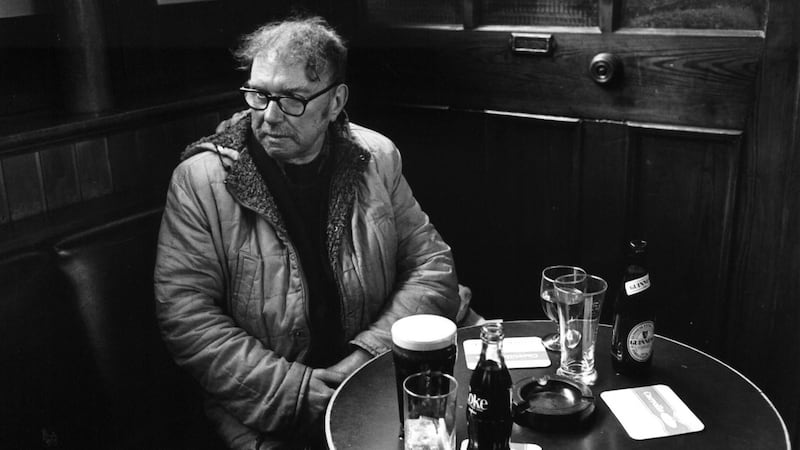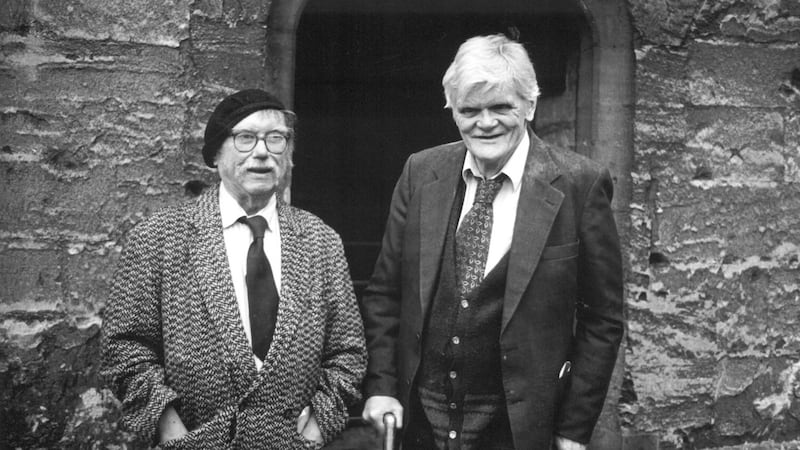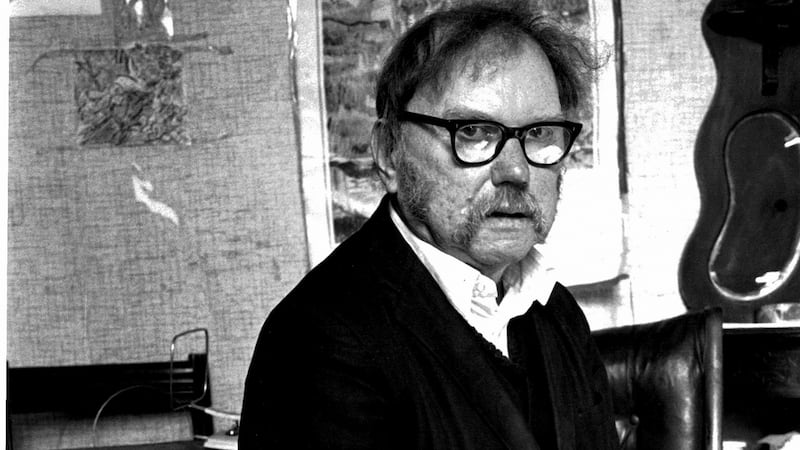The prayer book is putting on fat with in memoriam cards
– (More Terrorists, by Padraic Fiacc)
Sometime in the summer of 1984 while working in Belfast, I was introduced to the writer Brian Keenan at the bar of the Europa Hotel. I can’t remember what I was doing there, but it would have certainly something to do with what’s become known as the Troubles.
Brian had seen my photographs of Samuel Beckett and suggested I meet and photograph his friend the poet Padraic Fiacc. He would arrange the meeting for the following day at the Crown Bar across from the Europa. That meeting would become eventful for the three of us.
Padraic, who died in January 2019, aged 94 , was to poetry what the artist Francis Bacon was to painting. Unlike Bacon, Fiacc spent most of his writing life in the literary wilderness. Poets and photographers are image makers, great poets leave us great lines, as photographers leave us great pictures. One of those memorable Fiacc images that I have lived with and can never forget is from his poem More Terrorists: “The prayer book is putting on fat with in memoriam cards”, published in his collection Missa Terribilis (Blackstaff, 1986).
That being the year that Brian Keenan was kidnapped in Beirut, Lebanon and kept for nearly five years as a hostage chained for most of that time in underground tunnels. When he was released in 1990 he published an autobiographical account called An Evil Cradling, winning The Irish Times Literature Prize for non-fiction in 1991.

I had always kept in contact with Padraic and every time I was in Belfast I would visit. When Brian was kidnapped, I invited Padraic to London to give readings with support from actors at various Irish venues such as the Mean Fiddler in Harlesden.
Hell’s Kitchen
Padraic loved being in London and was happy to support all we were doing for Brian, who had done his thesis on Fiacc at university. Over the years that Padraic visited me in London and Oxford, I got to know about the man born Patrick Joseph O’Connor in Belfast in 1924.
His family emigrated to the United States in 1929, settling in New York city’s west side, known as Hell’s Kitchen, an area populated mainly by the Irish, where violence and poverty were part of daily life. Film directors Jules Dassin set the film noir classic The Naked City there in 1948 and William Friedkin shot The French Connection there in 1971, based on a true story about an Irish cop called Eddie Egan. Padraic told me he would see the camera crews on the streets daily.

Many years ago, I picked up a copy of Fiacc’s senior yearbook from 1942 on eBay when he was a student of Haaren High School, Brooklyn, where he co-edited the literary supplement and was a member of the Academy of Irish Arts. He would talk to me about his friend, the poet Padraic Colum, who taught in New York. Padraic loved the poems of Gerard Manley Hopkins, Baudelaire and the first World War poet Edward Thomas, who wrote the poem Adlestrop, based on a railway journey Thomas took on June 24th, 1914, during which his train stopped at the now closed station in the Gloucestershire village of Adlestrop.
Smouldering volcano
When Fiacc visited me in Chipping Norton, Oxfordshire, in 1995, I drove him to Adlestrop to take a picture of the sign which pleased him greatly. He was enormously engaging, enriching and as provocative a person as I have ever met. At times a smouldering volcano who consistently confronted the horrors of the Troubles. Who could not bear phonies. He spoke and wrote the truth. A Christ-haunted man, a secular mystic with an acute sensitivity to the agony of age, which became the predominant feature of many of his poems.
He was always happy to allow me to take photographs and was particularly fond of my friend the blind poet John Heath-Stubbs, who would come to visit me in Chipping Norton and west Cork from his home in Bayswater. They were both mavericks. I had introduced them in London and Oxford. Heath-Stubbs liked Fiacc and thought him a fine poet.

Heath-Stubbs should have been the poet laureate and Fiacc, as the poet of the Northern Irish Troubles, deserved much greater recognition than he received. Padraic dedicated a poem to me back in the 1990s in a collection called Semper Vacare, published by Lagan Press: The Good Shot, on being photographed in a medieval cemetery in Athy, Co Kildare.
Poet of the Troubles: Photographs of Padraic Fiacc by John Minihan will hang at the Linen Hall Library until September 24th



















